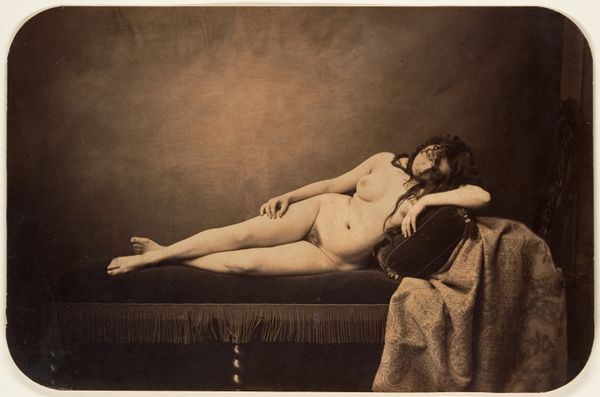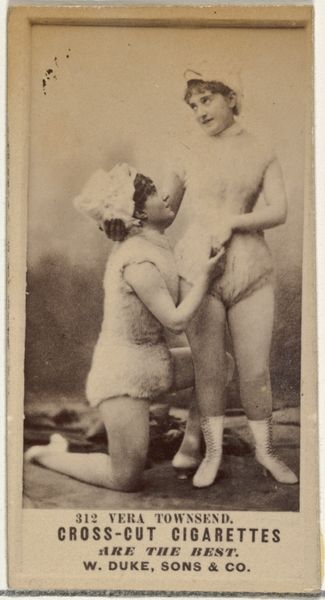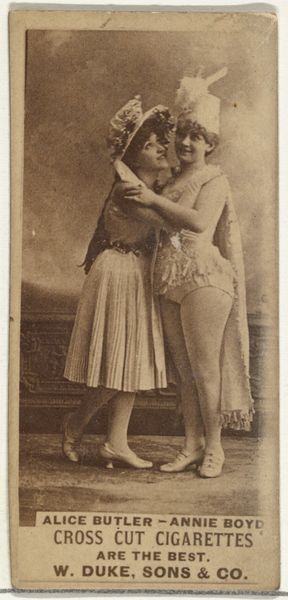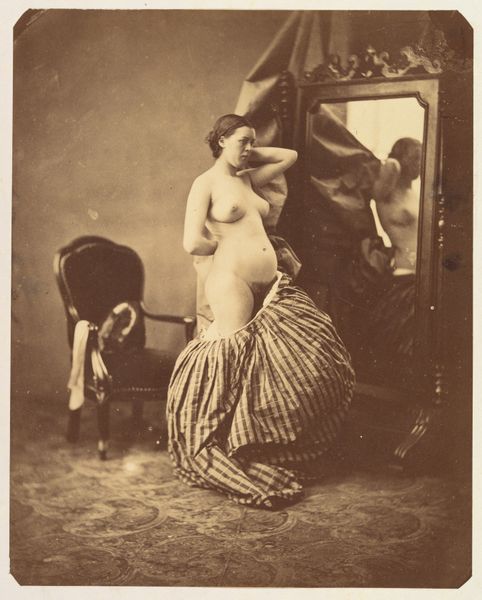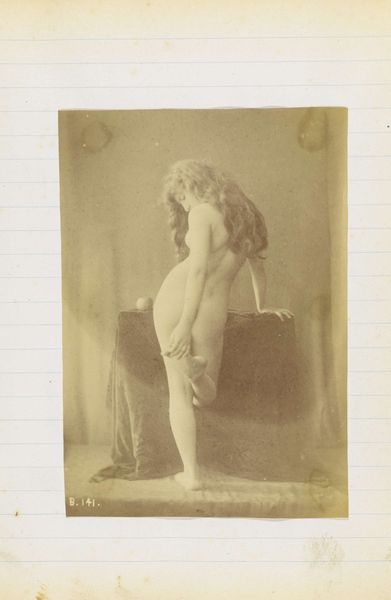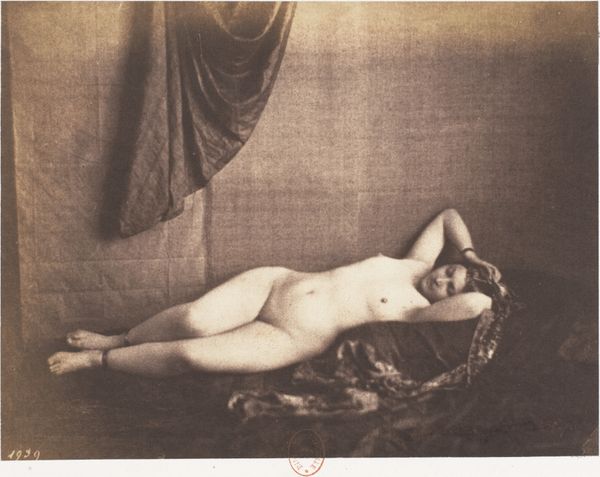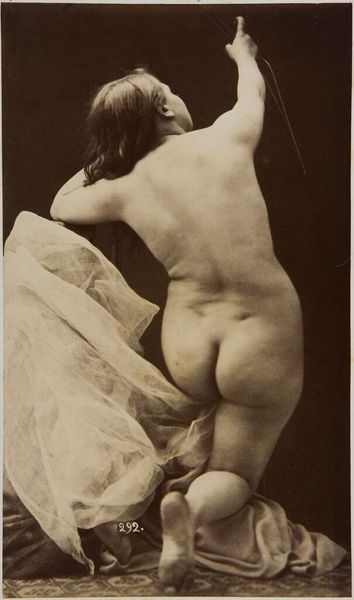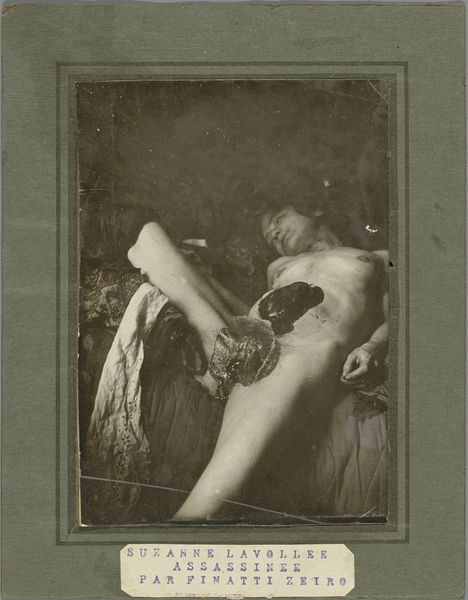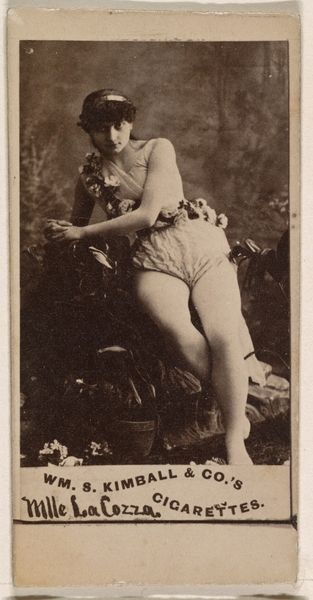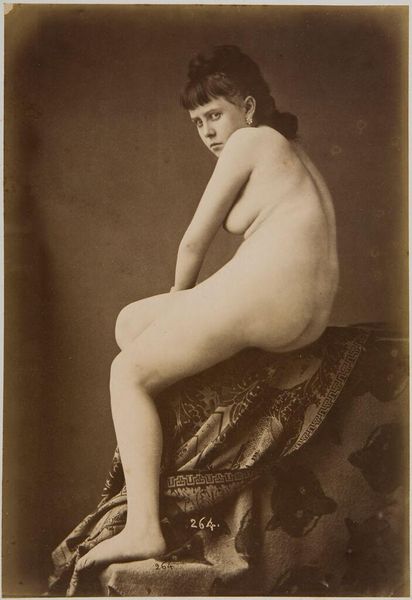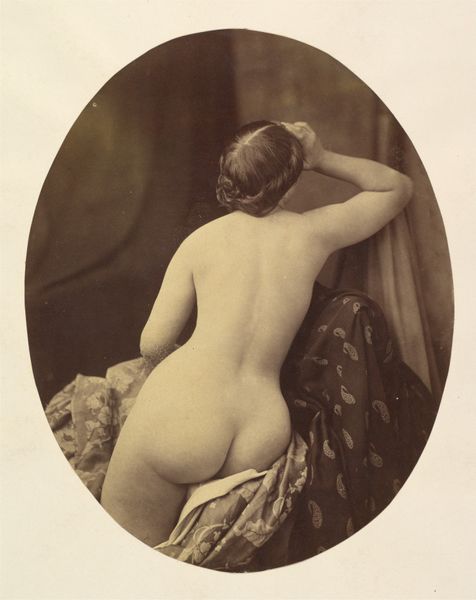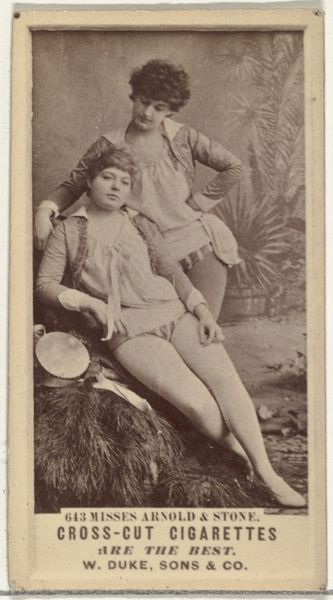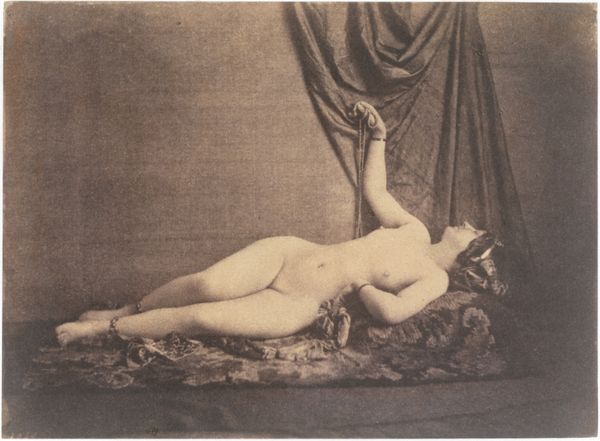
Studie van een vrouwelijk naakt, zittend met een naakt kind op schoot after 1880
0:00
0:00
photography
#
portrait
#
photography
#
historical photography
#
genre-painting
#
nude
#
realism
Dimensions: height 141 mm, width 98 mm
Copyright: Rijks Museum: Open Domain
Curator: This sepia-toned photograph, entitled "Studie van een vrouwelijk naakt, zittend met een naakt kind op schoot"—that translates to "Study of a female nude, sitting with a nude child in her lap"—is attributed to Louis Jean-Baptiste Igout, dating to after 1880. Editor: It's immediately striking, isn't it? The contrast between the smooth skin and the almost distressed photographic texture... It lends the scene an air of vulnerability. Curator: That’s partly down to the Realist style prevalent then, moving away from idealization and towards a more grounded portrayal. The "nude" genre painting it depicts reflects the artistic and cultural shifts of the late 19th century, showing evolving social attitudes around the public depiction of the human form. The composition also points toward art historical imagery of "mother and child" a common iconographic arrangement. Editor: Yes, I was drawn to that aspect as well—it's clearly invoking centuries of Madonna and Child imagery, but then destabilizes it. The figures lack halos and idealized expressions, appearing instead like an everyday tableau, adding new layers of psychological realism. What of the public reception at that time? How would photography of this type have been understood? Curator: Its reception would have been fraught with tension. On one hand, photographic realism offered a powerful tool for scientific and artistic study, including anatomical explorations. But, simultaneously, representations of nudity in this easily disseminated medium caused consternation about public morality, hence some being filed under genre painting and portraits instead. Editor: It really makes you wonder what stories this particular image carries—did Igout intend to explore new artistic territory or perhaps stir the pot regarding then-current societal conventions? Curator: A photograph of this kind surely became a battlefield for social commentary back in its days. Now, from a contemporary standpoint, it becomes something entirely new, opening dialogue about diverse viewpoints of motherhood, beauty, and power. Editor: Absolutely, analyzing its symbology makes one think deeply about evolving perspectives concerning sensuality, family, and acceptable norms regarding depiction and reception. Curator: Looking through the lens of history gives us ways of understanding these fascinating visual records and our own reactions. Editor: Precisely. It's quite revealing when we examine the art's role and the ongoing conversations they inspire within us.
Comments
No comments
Be the first to comment and join the conversation on the ultimate creative platform.
